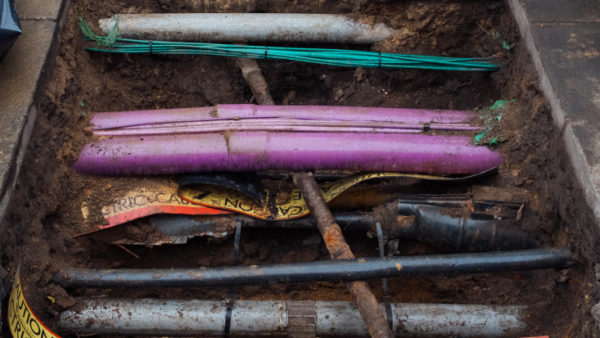
Today’s publication of the Fenby-Taylor independent review into cyber-physical infrastructure, Responsive Infrastructure, advocates for infrastructure that meets all stakeholders’ needs. And that means infrastructure owners measuring their assets’ performance more regularly, and unlocking innovation and data.
In the UK, most infrastructure has already been built. The UK has nearly 10,000 miles of rail and 250,000 miles of road. The true challenge is not how to make new roads, or new rail, but how to make our existing infrastructure operate better in a changing climate, for a growing population, while achieving net zero. The scrapping of the northern legs of HS2 shows that planning new infrastructure in the UK faces many challenges, and the country will have to learn to do more with less.
To operate at peak efficiency, infrastructure must be able to respond faster to climate change, to citizens’ needs, and to changing government policy. With spiralling costs, this requires investment in better technology, to prevent faults that take out essential services, to move more people, goods and services more easily, to prevent sewage spills before they are unavoidable, and so on, from water to energy, from transport to telecoms. Cyber-physical infrastructure is the umbrella term for these technological approaches, from robotics to AI to digital twins.
Change is coming
ChatGPT exploded into the public imagination at the start of 2023, and has resulted in many countries doubling down on investment to get ahead of the curve. At the start of November, leading powers from around the world gathered at Bletchley Park for the AI Safety Summit.
The Bletchley declaration signed by the UK, US, EU and China (among others) shows not just that the leaders of the world are taking the impact of technology on our lives seriously, but also that we are on the verge of a revolution that will reshape our lives in a way not seen since the advent of the automobile.
Change needs infrastructure
Cars need roads like AI needs cyber-physical infrastructure. Changing the way the built environment operates at a fundamental level requires the technological infrastructure to make it happen. We cannot avoid a sewage spill if we do not know it is going to happen. And if alternative routes cannot be not put in place, road works will heavily impact traffic.
The UK has been investing in cyber-physical infrastructure since 2021. It is the path that infrastructure in the UK will need to take to achieve the government’s ambitious targets: from climate change and the environment to increased capacity and efficiency.

”We need a trusted environment where innovators can work with real infrastructure assets without a lengthy procurement process.”
Infrastructure needs foundations
Numerous investments have already been made. Simon Hart of Innovate UK says the Responsive Infrastructure paper “will help Innovate UK and the wider ecosystem to develop a programme of support for UK businesses”. With the investments already made, cyber-physical infrastructure is enabling faster commercialisation, cheaper development, and more effective collaboration of innovative ideas.
Several catapults kicked off projects that are creating new opportunities for innovation. The Offshore Renewable Energy Catapult has created a 5G network that connects into a collaborative innovation environment called DOME (Digital Operation and Maintenance Environment). Meanwhile, the Satellite Applications Catapult has developed digital twins for its forthcoming Fawley Innovation Centre that will support innovative start-ups as part of the UK government’s investment in innovation.
The Responsive Infrastructure paper’s recommendations follow.
Measure better
Responsive Infrastructure advocates the introduction of a cyber-physical mandate, which would require infrastructure owners and operators to increase the frequency and quality of measurements they take.
“Infrastructure already has a vast amount of targets to meet, but by requiring infrastructure to improve how it measures its existing targets, we can create a data-led approach to infrastructure that will make infrastructure cheaper to run, not more expensive, because the operating conditions will be better understood,” Fenby-Taylor says.
Unlock innovation
The Responsive Infrastructure paper recommends the creation of a cyber-physical sandbox. “We need a trusted environment where innovators can work with real infrastructure assets without a lengthy procurement process. Innovators should be able to make proposals for improving infrastructure, rather than having to wait for infrastructure owners to ask,” Fenby-Taylor adds.
The paper advocates a shift from a research project focus to a products and services focus that responds to innovators’ needs by giving them low-cost, easy access to infrastructure on their own terms.
Unlock data
“While there are many initiatives underway to better understand how infrastructure operates, many of these are academic-led, and once funding ends, the data ends,” Fenby-Taylor explains.
The paper states that data in infrastructure needs to go beyond the FAIR principles (Findable, Accessible, Interoperable and Reusable) and recommends the four Ps of data. Data must be Productised, have Provenance, be Persistent and be Protected.
“If data is treated like a product or service, then it can add value for the long term,” Fenby-Taylor adds.
Responsive Infrastructure contends that making the construction and operation of infrastructure data-led will make it more responsive to the policies and strategies of infrastructure owners and government.
“If we can test our policies in real-time, then we can pivot in real-time,” Fenby-Taylor says.
Create unity
The paper recommends a single vision and leadership that brings together government, innovators and citizens, as well as infrastructure owners and operators, that serves the needs of its stakeholders.
Fenby-Taylor declares: “I welcome the launch of the Cyber-Physical Infrastructure Ecosystem. If we’re going to make citizens’ lives better, if we’re going to ask infrastructure to do more with less, if policy is to become provably effective in real-time, and if we’re going to make innovation business as usual, then we need an innovation ecosystem like this.
“There’s a lot of work to do, and it’s a big challenge, but this investment could make the UK a leader in infrastructure innovation globally, which will benefit the economy, nature and society.”
Find out more about the National Cyber-Physical Infrastructure Ecosystem on the Digital Twin Hub.
Don’t miss out on BIM and digital construction news: sign up to receive the BIMplus newsletter.













